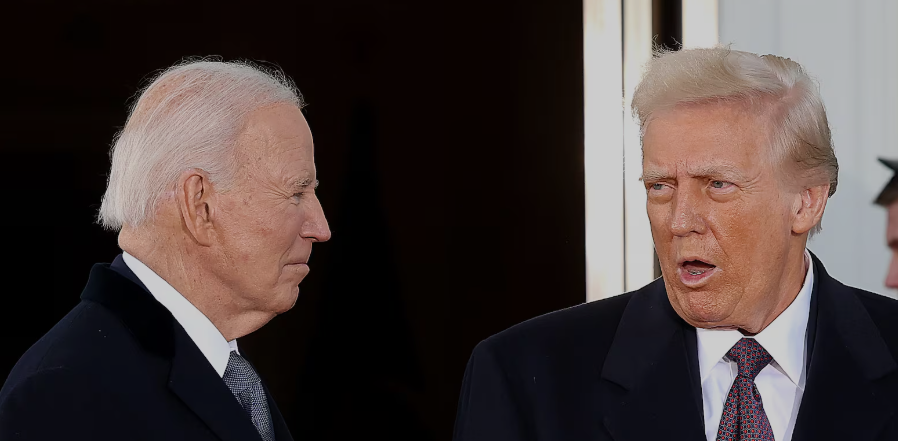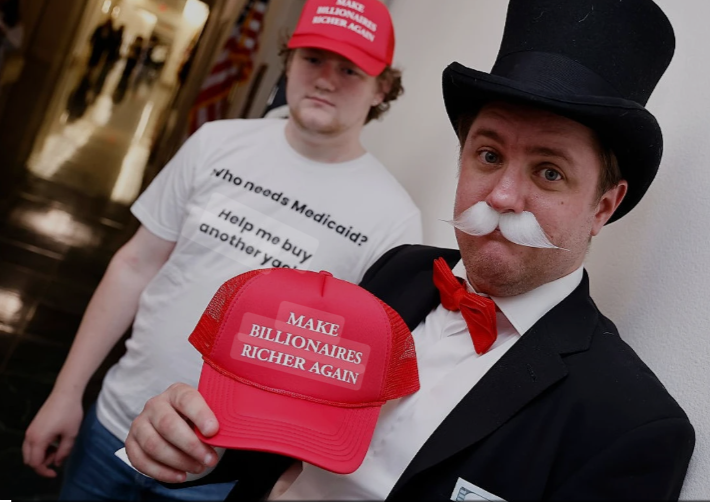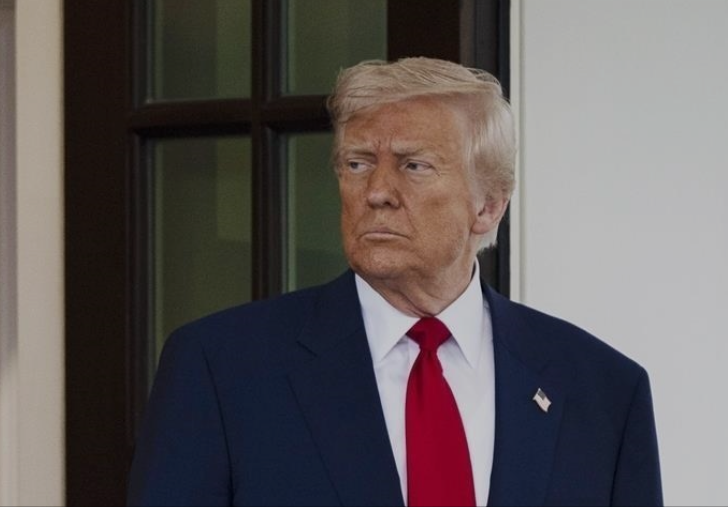In an increasingly desperate attempt to rewrite history, Donald Trump is now claiming that President Joe Biden is to blame for the economic contraction that occurred during Trump’s own first quarter back in office. Despite overwhelming data and expert analysis to the contrary, Trump has refused to take responsibility for the sudden reversal in the U.S. economy, choosing instead to blame his predecessor for an economic mess he clearly created.
Last week, the U.S. Department of Commerce—the very agency overseen by Trump’s administration—confirmed that the national economy shrank at an annualized rate of 0.3% in the first quarter. This marks a troubling and unexpected setback following four years of steady growth under President Biden. Yet rather than acknowledge the impact of his own destabilizing policies—particularly his hastily announced global tariffs—Trump predictably pointed the finger at Biden.
During a cabinet meeting that felt more like a political pep rally than a governance session, Trump dismissed the downturn, declaring: “This is Biden’s economy.” Later, speaking to a group of corporate executives, he doubled down: “The next quarter is Biden too.” But economic reality isn’t a partisan soundbite—it’s built on data, policy, and confidence. And Trump is undermining all three.
Even The New York Times, known for its careful editorial standards, openly challenged Trump’s narrative. The paper reported that Trump “blamed his predecessor for handing him a bad economy, despite data showing that growth was strong when he took office.”
Strong Growth Under Biden—Sabotaged by Trump’s Reckless Moves
When President Biden left office, economists broadly praised the strength and resilience of the U.S. economy. Mark Zandi, Chief Economist at Moody’s Analytics, put it plainly: “President Trump is inheriting an economy that is about as good as it ever gets.” The U.S. economy was growing faster than any other major country, outperforming Britain, Germany, France, and Japan. Headlines from The Economist described the U.S. as “the envy of the world.”
In Biden’s final full quarter, GDP grew by a robust 2.4%. Inflation had been tamed, falling to 2.9%—well within range of the Federal Reserve’s target. Unemployment was just 4.0%, and across Biden’s four years, the average jobless rate was lower than any president since the 1960s. Even more impressive: Biden oversaw the creation of 16.6 million jobs, the largest four-year increase in U.S. history.
Tariffs and Turmoil: Trump’s Self-Inflicted Wound
So what caused the economic reversal? Economists agree: it wasn’t Biden—it was Trump himself. His sudden reintroduction of sweeping global tariffs in early April spooked markets, disrupted global supply chains, and sent businesses scrambling to import goods before new levies hit. Ironically, that rush to import actually reduced GDP on paper due to how the metric is calculated.
The downturn wasn’t just predictable—it was preventable. Trump’s erratic economic policy and inflammatory rhetoric reintroduced uncertainty into an economy that had enjoyed relative stability. And now, he’s trying to avoid accountability for the consequences of his actions.
Jared Bernstein, who chaired the Council of Economic Advisers under Biden, put it bluntly on MSNBC: “I have never seen a more direct connection between economic decline and the actions of one individual. This downturn is squarely on Trump and his trade war.”
Trump’s Pattern of Deception and Deflection
This isn’t the first time Trump has tried to escape blame. From economic missteps to immigration falsehoods, Trump has repeatedly distorted the truth to fit his narrative. He once infamously insisted that an innocent immigrant, Kilmar Ábrego García, had MS-13 tattoos photoshopped onto his knuckles—an assertion proven false, yet never retracted.
Trump’s tendency to lie, deflect, and mislead isn’t just a personal flaw—it’s a governing liability. By refusing to accept responsibility for economic setbacks he caused, he undermines public confidence and erodes accountability at the highest level of government.
Markets Are Watching—And Reacting
While Trump blames Biden, the stock market tells another story. During Trump’s first 100 days, the S&P 500 fell by 7%—the worst start for a president since Gerald Ford. Yet he continues to post misleading updates on Truth Social, recently writing: “This is Biden’s Stock Market, not Trump’s.”
What he failed to mention? The sharp decline didn’t begin until April 2—well after Biden left office—when Trump dropped the hammer with sweeping new tariffs. Wall Street noticed, and investors responded with a selloff. Meanwhile, under Biden, the Dow surged 39% and the S&P 500 jumped 55.7%, including a 28% rise in 2024 alone.
Looking Ahead: More Trouble on the Horizon?
Economists now warn that if Trump continues on this reckless path, the second quarter could be even worse. Supply chains are under stress. Prices are climbing. And both consumers and businesses are growing more cautious. Fear and unpredictability—two Trump trademarks—are back in the economic equation.
Former Ohio Governor John Kasich, a Republican, had little patience for Trump’s blame game: “You can’t blame Biden,” he said. “It’s like saying the dog ate my homework.”
The bottom line: Trump inherited an economy in full recovery, and within weeks, began dismantling it. Instead of taking responsibility, he’s trying to rewrite history. But Americans—and the economy—deserve better than revisionist politics and runaway ego. They deserve leadership grounded in truth, accountability, and results.



